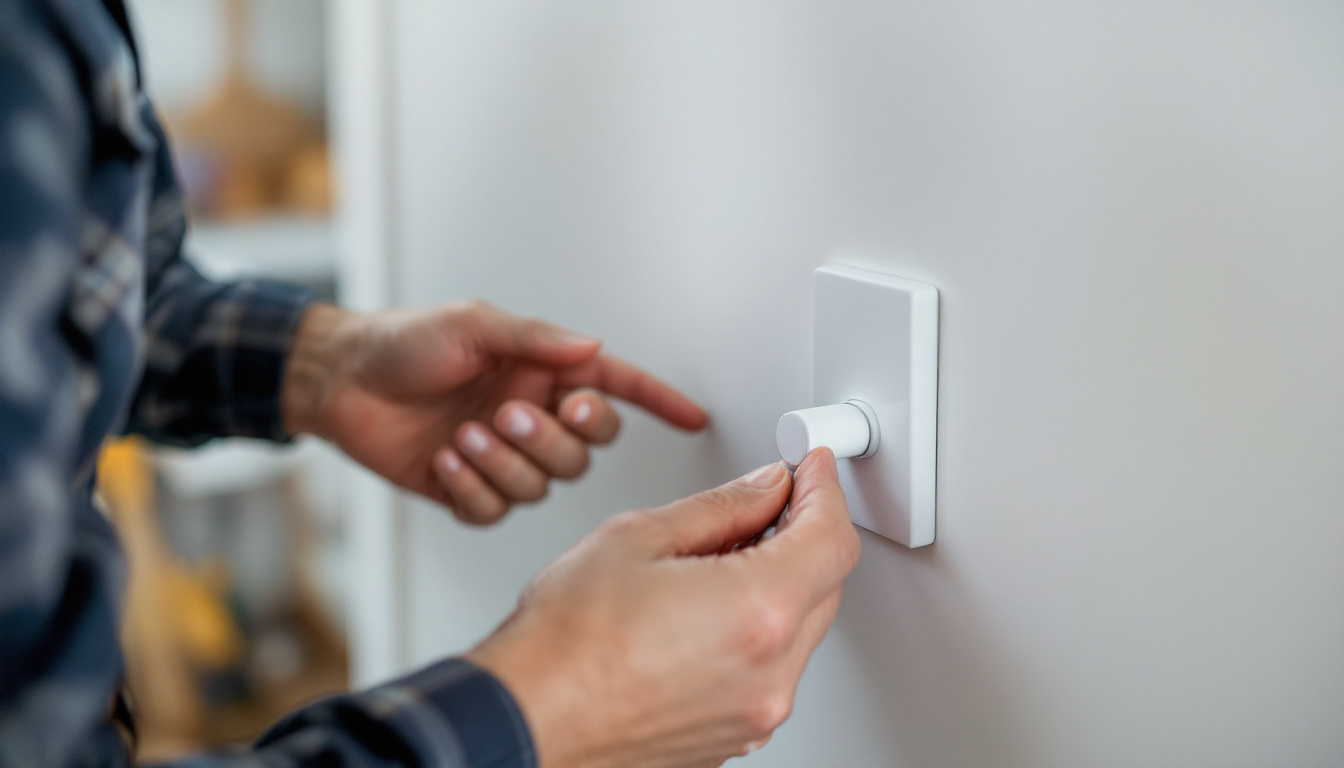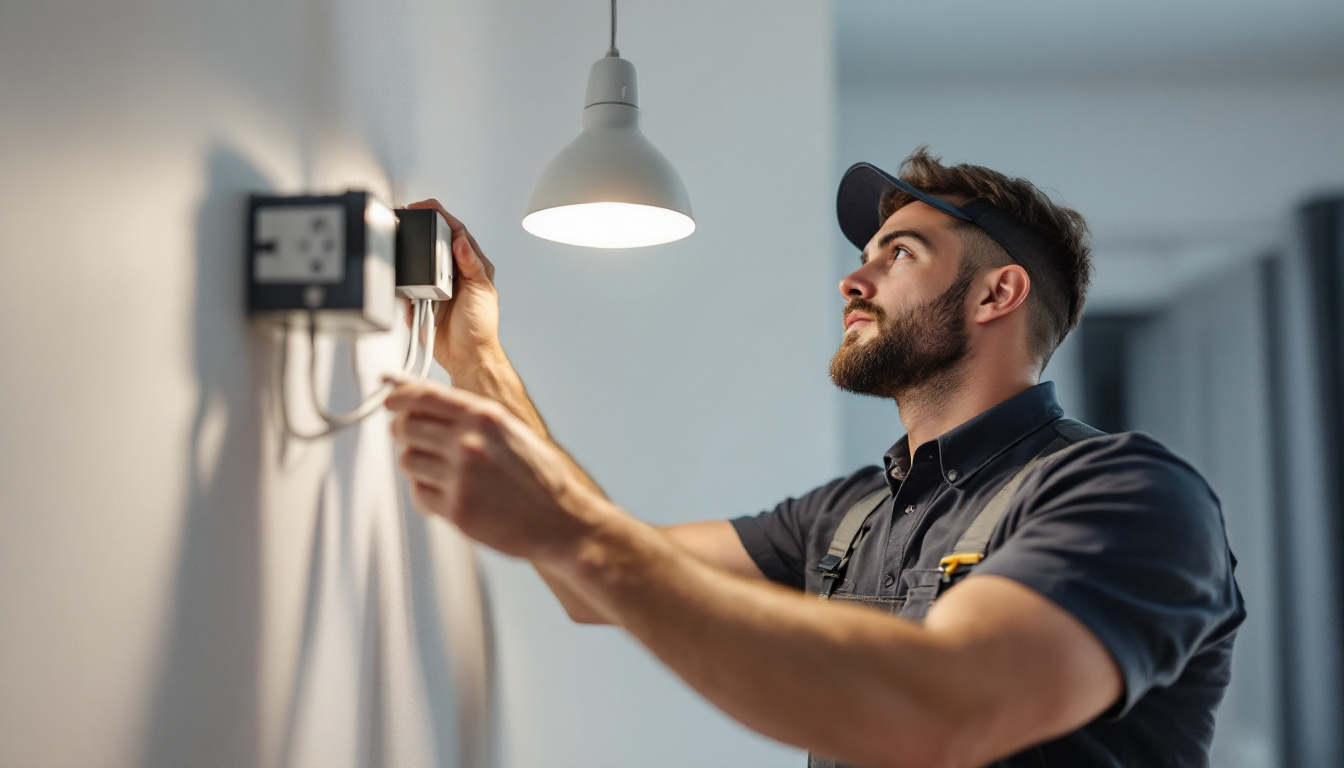
In the ever-evolving world of lighting technology, movement light switches have emerged as a significant innovation. These devices, which automatically control lighting based on occupancy, are not only energy-efficient but also enhance user convenience. For lighting contractors, understanding the intricacies of movement light switches is essential. This checklist serves as a comprehensive guide to ensure successful installation and optimal performance.
Before diving into the installation process, it is crucial for lighting contractors to have a solid understanding of what movement light switches are and how they function. These switches utilize sensors to detect motion within a specified area, automatically turning lights on or off based on occupancy. This technology significantly reduces energy consumption and extends the lifespan of lighting fixtures.
Movement light switches come equipped with various types of sensors, each designed for specific applications. The most common types include passive infrared (PIR) sensors, ultrasonic sensors, and dual-technology sensors. Understanding the differences among these sensors is vital for selecting the appropriate switch based on the environment.
PIR sensors detect changes in infrared radiation, making them ideal for areas with clear line-of-sight. In contrast, ultrasonic sensors emit sound waves to detect movement, allowing them to sense motion even behind obstacles. Dual-technology sensors combine both PIR and ultrasonic technologies, providing enhanced reliability and reducing false activations.
Incorporating movement light switches into lighting systems offers numerous advantages. First and foremost, they contribute to significant energy savings by ensuring that lights are only on when needed. This not only reduces electricity costs but also minimizes the environmental impact associated with excessive energy consumption.
Additionally, movement light switches enhance safety and convenience. In commercial spaces, for instance, they can illuminate hallways and stairwells automatically, reducing the risk of accidents. For residential applications, they provide ease of access when entering a room with hands full. Moreover, these switches can be particularly beneficial in high-traffic areas, such as restrooms or break rooms, where lights can automatically turn off after a certain period of inactivity, further conserving energy.
Furthermore, the integration of movement light switches can lead to improved user experience. In smart home systems, these switches can be programmed to work in conjunction with other devices, such as smart thermostats and security systems, creating a cohesive and responsive environment. For example, when a person enters a room, not only do the lights turn on, but the thermostat can adjust to a comfortable temperature, and security cameras can activate, providing a seamless transition into a safe and welcoming space. This level of automation not only enhances comfort but also promotes a modern, tech-savvy lifestyle that many homeowners are seeking today.
Proper preparation is key to a successful installation of movement light switches. Lighting contractors should consider several factors before proceeding with the installation process. These considerations will help ensure that the switches function optimally and meet the needs of the space.
Before installation, it is essential to assess the environment where the movement light switch will be placed. Factors such as the size of the area, the layout, and potential obstacles can influence the effectiveness of the sensor. For example, a large open space may require multiple sensors to ensure comprehensive coverage, while smaller rooms may only need a single unit.
Additionally, contractors should evaluate the types of activities that occur in the space. High-traffic areas may benefit from more sensitive sensors, while quieter zones may require less sensitivity to avoid false triggers. It’s also important to consider the height at which the sensor will be mounted; sensors positioned too high may not detect movement effectively, while those mounted too low could be triggered by pets or other small objects. Taking into account the specific dynamics of the environment will lead to a more tailored and effective installation.
Understanding the electrical requirements of movement light switches is crucial for a seamless installation. Most switches operate on standard voltage, but it is essential to verify compatibility with existing wiring systems. Contractors should check the circuit capacity and ensure that it can handle the additional load of the new switch.
Moreover, it is advisable to review local electrical codes and regulations to ensure compliance. This not only guarantees safety but also avoids potential fines or rework due to non-compliance. Additionally, contractors should consider the type of wiring used in the installation; for instance, using low-voltage wiring can be beneficial in certain applications, especially in commercial settings where energy efficiency is a priority. By understanding these nuances, contractors can make informed decisions that enhance the overall effectiveness and reliability of the lighting system.
Once the pre-installation considerations have been addressed, contractors can proceed with the installation of movement light switches. Following a systematic approach will help ensure that the installation is efficient and effective.
Before starting the installation, contractors should gather all necessary tools and materials. This typically includes wire strippers, screwdrivers, a voltage tester, and, of course, the movement light switch itself. Having everything on hand will streamline the process and minimize downtime.
Additionally, it is beneficial to have a ladder or scaffolding available if the switch needs to be installed at a height. Safety gear, such as gloves and goggles, should also be worn to protect against potential hazards during installation. It’s also wise to have a flashlight handy, especially if working in dimly lit areas, to ensure visibility while handling electrical components. Furthermore, a small container or magnetic tray can be useful for keeping screws and small parts organized, preventing them from getting lost during the installation process.
The wiring process is a critical step in the installation of movement light switches. First, ensure that the power is turned off at the circuit breaker to prevent electrical shock. Next, remove the existing switch and carefully disconnect the wires.
When connecting the movement light switch, follow the manufacturer’s wiring diagram closely. Typically, this involves connecting the line wire, load wire, and ground wire. Once the connections are secure, carefully tuck the wires back into the electrical box and mount the switch to the wall. It is also important to check the compatibility of the switch with the existing electrical system, as some movement light switches may require specific voltage or amperage ratings. Additionally, consider the placement of the switch; it should be positioned where it can effectively detect movement without obstruction, ensuring optimal performance.
After installation, it is essential to test the movement light switch to ensure it operates as intended. Turn the power back on and activate the switch. Walk through the coverage area to verify that the lights turn on and off appropriately based on movement.
If the switch does not function correctly, double-check the wiring connections and sensor settings. Adjustments may be necessary to optimize sensitivity and timing based on the specific environment. It may also be beneficial to review the user manual for troubleshooting tips, as different models may have unique features or settings that can enhance performance. Additionally, consider the ambient light levels in the area; some switches have adjustable sensitivity to light, which can help prevent them from activating during daylight hours, thus conserving energy and extending the lifespan of the bulbs used.
Once the movement light switch is installed and tested, contractors should consider making post-installation adjustments to enhance performance. These adjustments can significantly impact the effectiveness of the lighting system.
Most movement light switches come with adjustable settings that allow contractors to customize the sensor’s sensitivity and timing. Sensitivity settings determine how much movement is required to activate the switch, while timing settings dictate how long the lights remain on after motion is detected.
Contractors should take the time to configure these settings based on the specific needs of the space. For example, areas with frequent movement may require higher sensitivity and shorter timing, while quieter zones may benefit from lower sensitivity and longer timing.
After installation, it is crucial to educate the client on the operation and benefits of the movement light switch. Providing clear instructions on how to use the switch, adjust settings, and troubleshoot common issues can enhance the client’s experience and satisfaction.
Additionally, contractors should inform clients about the energy-saving potential of movement light switches and encourage them to monitor their electricity bills to see tangible results over time.
To ensure the longevity and effectiveness of movement light switches, regular maintenance and troubleshooting are essential. Lighting contractors should inform clients about the importance of keeping the sensors clean and free from obstructions.
Dust and debris can accumulate on the sensor lens, potentially affecting its performance. Regular cleaning with a soft, dry cloth can help maintain optimal functionality. Additionally, periodic inspections should be conducted to ensure that the wiring remains secure and that there are no signs of wear or damage.
Contractors should also encourage clients to report any unusual behavior, such as lights flickering or not activating as expected. Early detection of issues can prevent more significant problems down the line.
Even with proper installation and maintenance, issues may arise with movement light switches. Common problems include false activations, lights not turning on, or the sensor not detecting movement. Troubleshooting these issues often involves checking the settings, inspecting the wiring, and ensuring that the sensor is not obstructed.
In cases where problems persist, contractors may need to consult the manufacturer’s guidelines or consider replacing the unit. Keeping a record of common issues and solutions can aid in providing efficient service to clients.
Movement light switches represent a significant advancement in lighting technology, offering energy efficiency and convenience. For lighting contractors, understanding the installation process, configuration, and maintenance of these devices is essential for delivering high-quality service to clients.
By following this comprehensive checklist, contractors can ensure successful installations that meet the needs of various environments. As the demand for energy-efficient solutions continues to grow, movement light switches will undoubtedly play a pivotal role in the future of lighting design.
Ready to elevate your lighting projects with the latest in movement light switch technology? Look no further than LumenWholesale for all your lighting needs. We provide contractors with superior, spec-grade lighting products at unbeatable wholesale prices, ensuring you get the most value for your investment. Our extensive selection is tailored to meet the highest industry standards, so you can trust in the reliability and performance of every product. Plus, with free shipping on bulk orders, you can stock up on high-quality lighting solutions without worrying about hidden fees or compromises. Make the smart choice for your next project and experience the perfect blend of quality, affordability, and convenience. Visit LumenWholesale today and discover the best wholesale lighting value available!

Discover why Leviton Manufacturing is a game-changer for lighting contractors.

Discover the essential role outdoor lights play in garage lighting installations.

Discover the top strategies lighting contractors use to illuminate mailboxes with solar lights.

Discover the ultimate checklist for lighting professionals focused on lamp street lights.